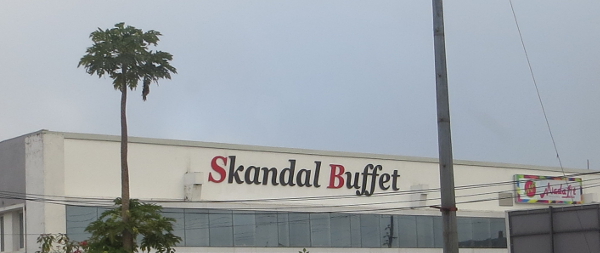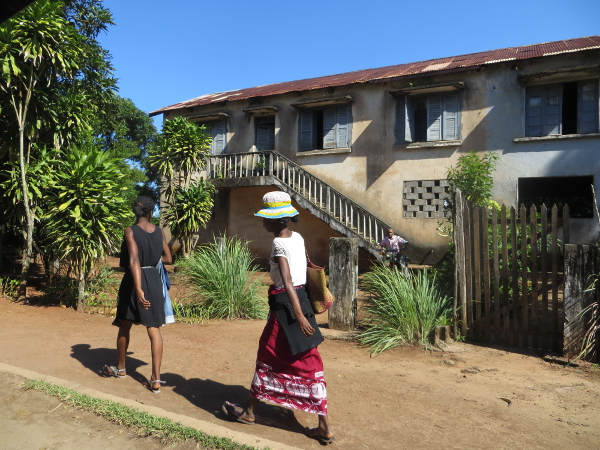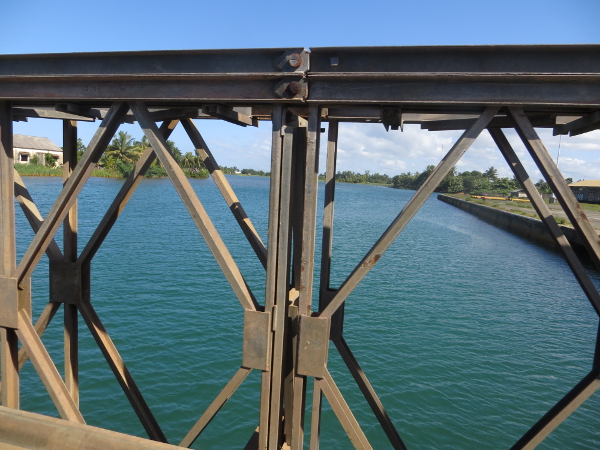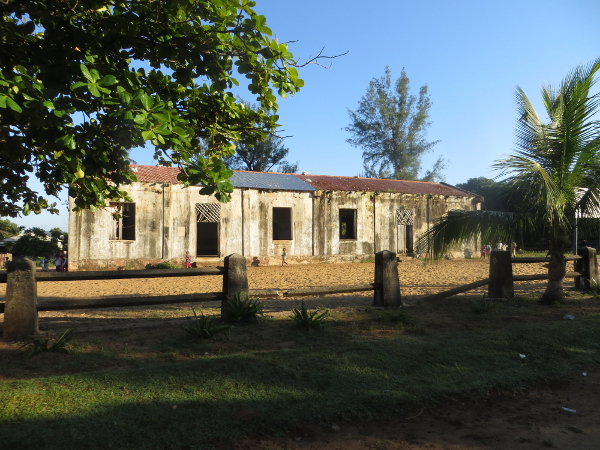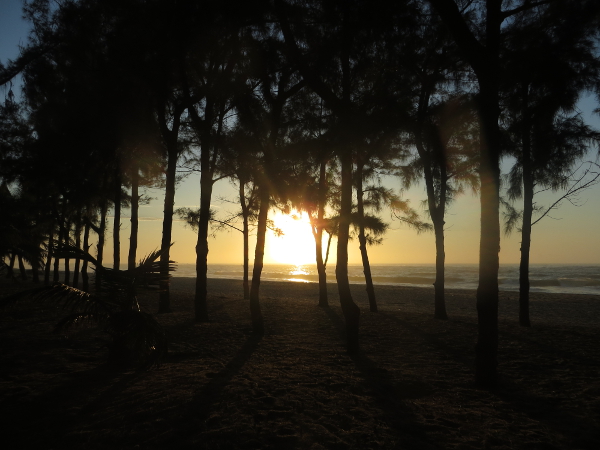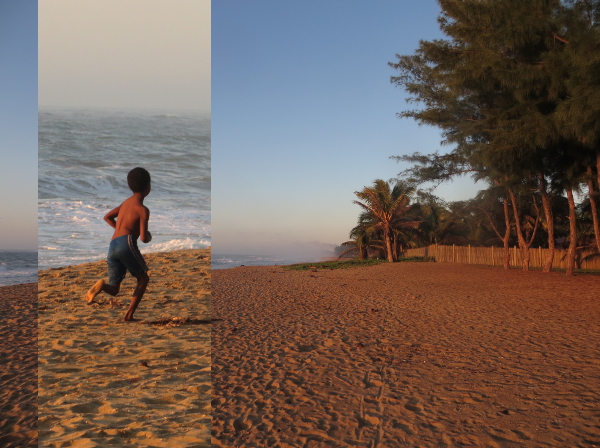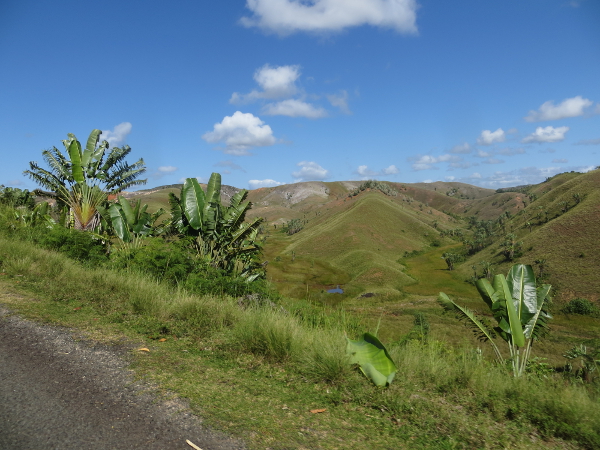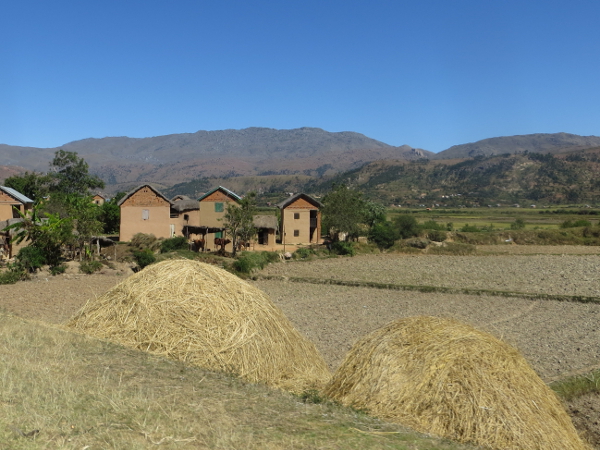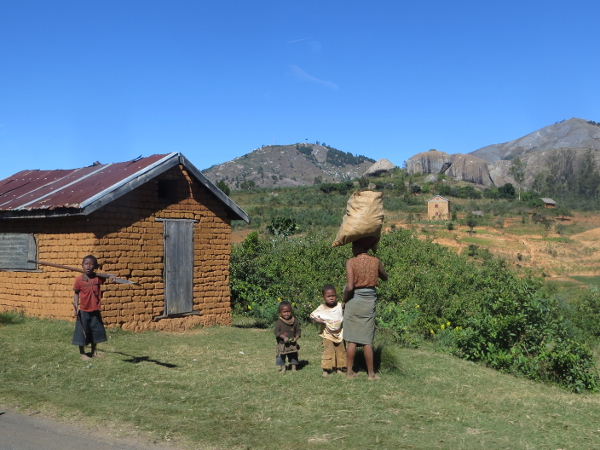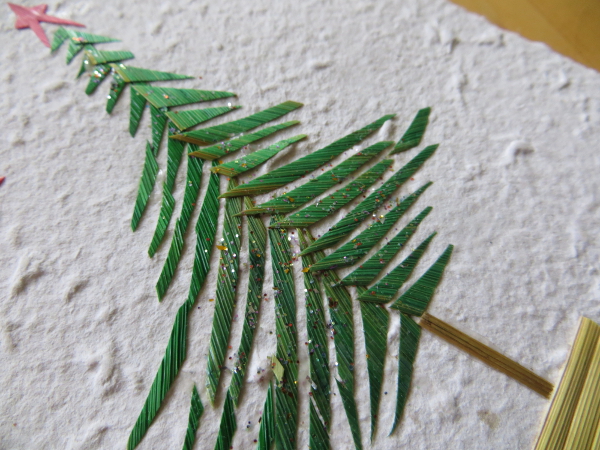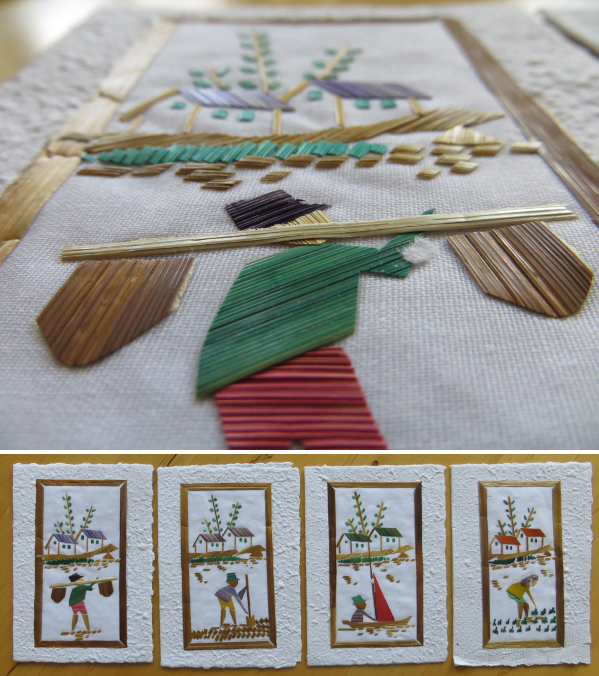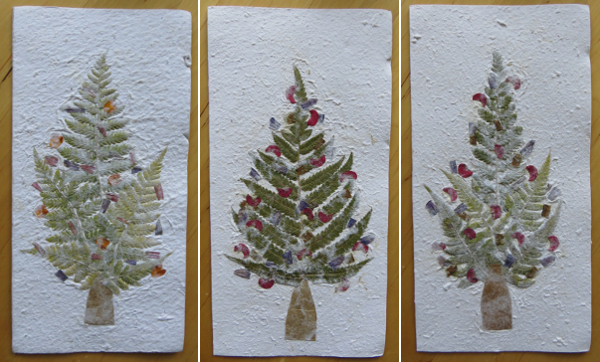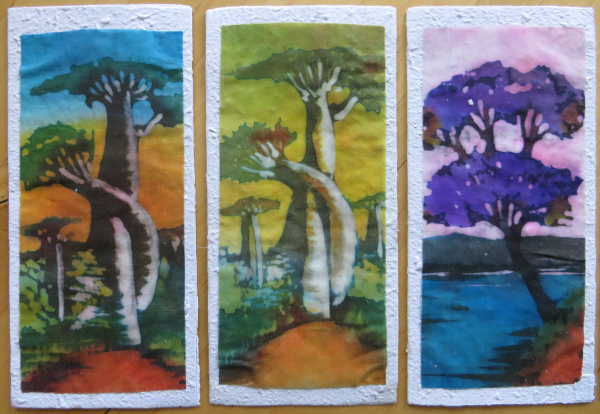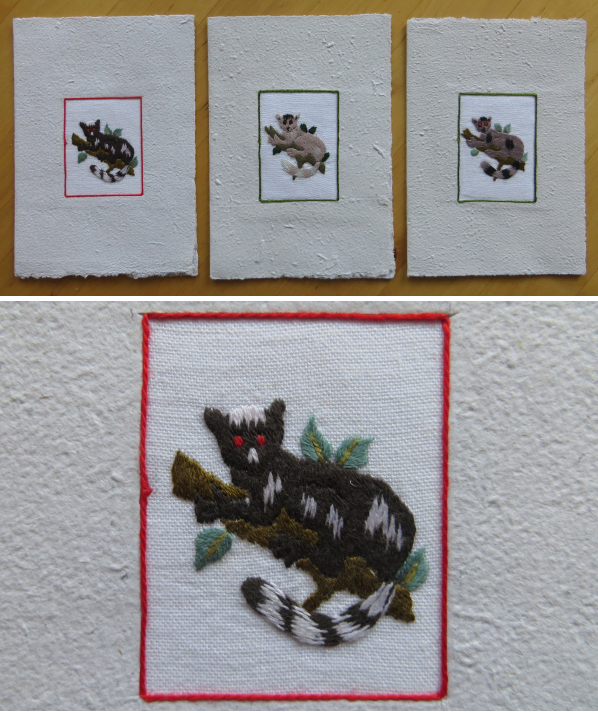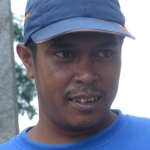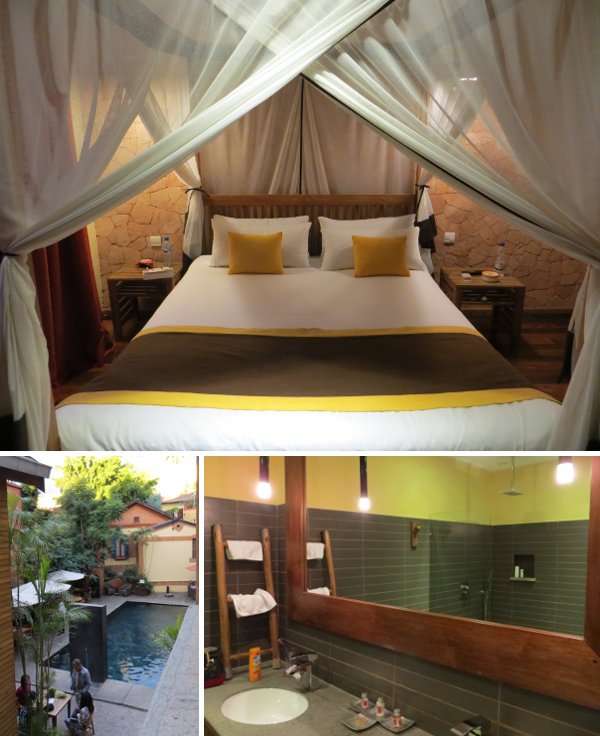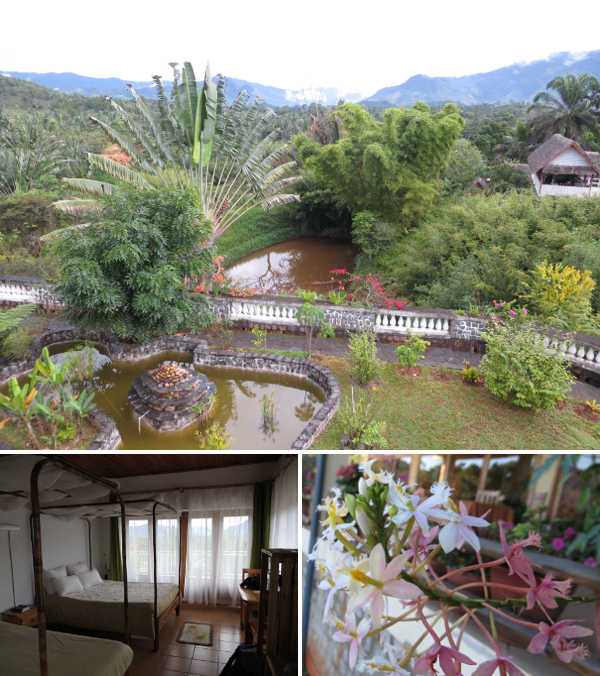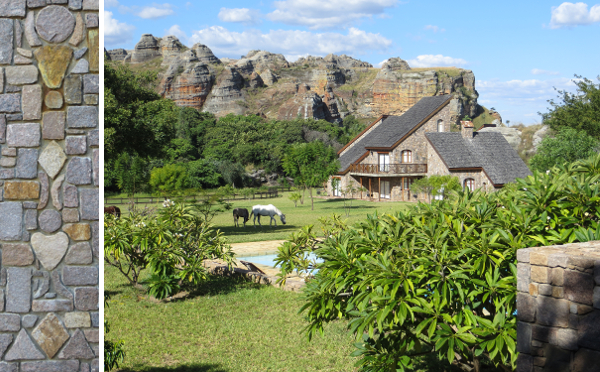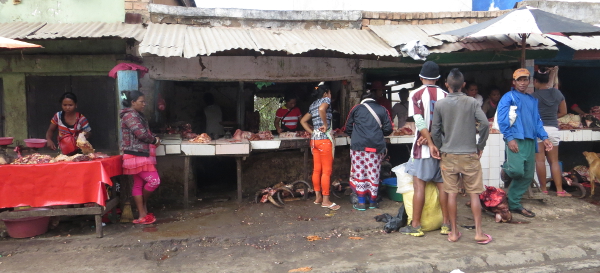
Endlich: ich weiß jetzt, wie es da aussieht, wo der Pfeffer wächst! Könnte schlimmer sein 🙂 Ich hatte vorher nicht darüber nachgedacht, ob Pfeffer an Büschen oder Bäumen wächst, ggf. sogar unter der Erde… alles nicht richtig: er wächst an so einer Art Lianen, die sich an Bäumen hochranken. Deswegen muss man für eine Pfefferplantage erstmal Bäume pflanzen und die dann im weiteren Verlauf auch ordentlich pflegen, ständig beschneiden usw., damit der Pfeffer auch genug Platz hat.
In German you can tell people to „go where the pepper grows!“ if you want them to go and get lost. And I went to find out what it looks like there – not that bad, really 🙂 I have to admit that I hadn’t given it a thought before how pepper grows… on bushes, on trees, maybe even in the ground… all wrong: it grows on some sort of liana that climb up trees. That’s why a pepper plantation starts out growing trees which then need to be well maintained because you need to make sure that the pepper is what grows, the trees not so much.

Man hört auch sonst eine Menge interessanter Dinge: Pfeffer ist umso besser, je schwerer er ist. Richtig guter schwarzer Pfeffer in ein 1-Liter-Gefäß gefüllt wiegt mehr als 600g. Kaufen kann man auch solchen, der vielleicht gerade mal 300g wiegt. Roter Pfeffer ist gar kein Pfeffer (jedenfalls nicht im Zusammenhang mit Madagaskar – vielleicht gibt es ihn irgendwo anders). Alle Versuche, den „wilden Pfeffer“ zu domestizieren, sind bislang fehlgeschlagen. Auf meine Frage, ob man es dann nicht vielleicht einfach lassen soll, guckte mich der Mensch, der in „fragrances and flavors“ macht, etwas ungläubig an. „Aber die Nachfrage! Die Sterneköche sind auf den Geschmack gekommen!“
It was day filled with interesting facts and trivia concerning pepper and other spices: the heavier the pepper, the better. A 1-liter container of real good black pepper will weigh more than 600g. You can get pepper of a quality of less than 300g. Red pepper is not really pepper (at least not what goes for red pepper in Madagascar – maybe there is elsewhere). All attempts at domesticating „wild pepper“ have so far been unsuccessful. My question whether one should simply stop trying was met with a gaze by the guy who is „in fragrances and flavors“ that left no doubt: that’s stupid! „But the demand! All the chefs in Europe and elsewhere are hooked on the taste now!“

Dass Pfeffer ein ziemliches Geschäft ist, zeigt wohl auch eine gigantische Versuchsfläche eines Investors, der es mal ohne Bäume ausprobieren möchte. Mein erster Gedanke bei dem Anblick dieses… Werks blieb unausgesprochen, bis ihn die russische Kollegin formulierte: „Das erinnert mich an das Holocaust-Denkmal in Berlin!“ Die Meinungen der Fachleute sind eher skeptisch. Zwar weniger Arbeit – „aber die Steine werden sich aufheizen, das wird nicht funktionieren!“ Es dauert drei Jahre, bis man den ersten Pfeffer ernten kann. Ich hoffe, dass ich irgendwie erfahren werde, was aus dieser Plantage wird.
One look at this giant test of a new growing method without trees that some investor thought up leaves us in no doubt: pepper is quite a business. I left my first thought unspoken but then our colleague from Russia said it: „That reminds me of the Holocaust memorial in Berlin!“ The experts we were traveling with (and more who we showed pictures to later) were all very skeptical about it. Yes, less work with the trees – „but the rocks will heat up and ruin the plants!“ It takes three years before you have the first harvest. I hope there will be a way to find out about this.
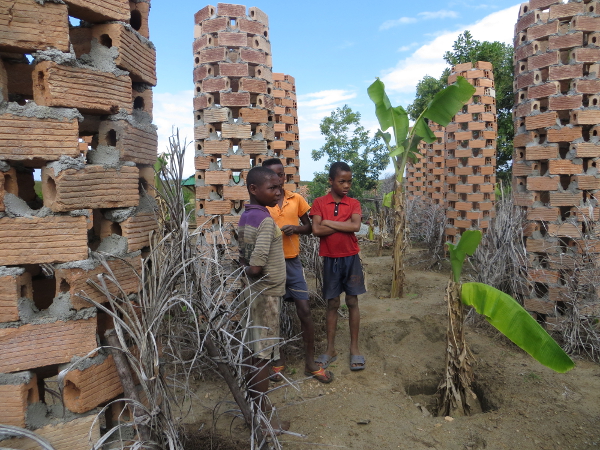
Von wegen Geschäft: der Preis für Vanille ist explodiert und unbezahlbar. Vor 2 Jahren haben wir, wenn ich mich recht erinnere, das Kilo für 80 Euro gekauft. Der Preis liegt derzeit bei 600 Euro. Und die Qualität ist unterirdisch. Der Zusammenhang war mir erst nicht klar, aber weil der Preis so wahnwitzig ist, ernten einerseits die Bauern vor der Reife und andererseits wird überall unreife Vanille geklaut (was die Bauern nur wieder bestärkt, selbst unreif zu ernten, damit sie wenigstens selbst was davon haben). Im Detail erfasst habe ich die Preis-Dynamik aber nicht, wenn ich ehrlich bin. Aber ich verstehe auch keine Aktienkurse, insofern…
Talking about business: the price for vanilla just exploded. Two years ago, we bought vanilla at 80 Euros per kg, if I remember correctly. The current rate is 600 Euros. And on top of that, the quality is really bad. I didn’t see the connection first but because the price is so crazy, the farmers harvest too soon to be sure to get the price. And also, vanilla is being stolen off the plants like crazy which in turn motivates farmers to harvest even sooner so that at least they get the money. I have to say that the details of this dynamic are still beyond me. But then I don’t understand the stock exchange, either, so…

Was auf dem Bild oben ein bisschen an ein Gräberfeld erinnert, ist eine Nelkenplantage. In diesem Fall noch ziemlich kleine Büsche, die durch eine Box aus Palmenblättern vor Wind und Sonne geschützt werden. Ingwer hätte mich noch interessiert – vor allem seit ich weiß, dass Ingweröl ein sehr nachgefragter Stoff ist. In der Parfumindustrie. Für die Zahlenfreaks unter den Lesern: für 1 Liter Öl braucht man 250 kg frische Ingwerwurzeln. Aber weg von Gewürzen und Düften zu der Frage, die am ersten Reisetag wieder aufkam: wo hier alles grün ist und so viel wächst, alles mögliche zum Kauf angeboten wird… warum (und wo) gibt es hier Menschen, die hungern?
Looking at the picture above, I’m reminded of a cemetery but it is in fact a clove plantation. In this case, the bushes are still very small, sitting in these boxes made of palm leaves, protecting them from the wind and the sun. I would have loved to see a place where ginger is grown, too – especially since I got to know that ginger oil is very much in demand. In the perfume industry. Some more numbers: to get 1 liter of ginger oil, you need 250 kg of fresh ginger roots. But let’s move on from spices and fragrances to the questions that we had from day 1 of this trip: with all the lush vegetation where all kinds of things not only grow but are offered on the markets as well… why (and where) are there people who suffer from hunger?

Wenn ein Reisfeld ca. 2 Wochen vor der Ernte so aussieht, wie oben, dann ist das übel. Wir haben den Leiter der Mission Catholique getroffen, der bereits versucht hat, die Regierung auf die Lage in seiner Gemeinde aufmerksam zu machen. Es gibt halt keine Bilder von apathischen Kindern, von verendetem Vieh oder von Boden, der vor Trockenheit aufplatzt. Und die Ernte wird auch nicht gleich 0 ausfallen. Aber je nach Feld nur zwischen 15 und 50% des normalen Ertrags bringen. Das reicht nicht weit und schon gar nicht, um in der nächsten Saison noch was zum Anpflanzen zu haben.
When a rice paddy about two weeks away from harvest time looks like the one above, that’s not good. We have met the head of Mission Catholique who has already tried to raise the government’s attention to the plight of the people in his community. There are no pictures of lethargic children, of dead cattle or of fields that pop open because they are so dry. And it will not be a 0 harvest. But depending on the paddy, it will only yield between 15 to 50% of the normal yield. That won’t take anyone far and let alone leave anything to plant in the next season.

Und wie kommt es dazu? Das passiert, wenn es zu trocken ist, wenn du das erste Mal startest… und das geht vor die Hunde. Dann startest du einen neuen Versuch und den zerhaut dir dann der Zyklon, so dass nicht viel übrig bleibt. Und die Zyklone kommen jedes Jahr – wie die Hurricanes in der Karibik oder die Taifune auf den Philippinen. Schon die Häuser hier sind darauf ausgerichtet: keine standfesten Bauten aus Ziegel und Holz wie im Hochland, sondern einfache Hütten aus Palmblättern oder ähnlichem. Die hat man schnell wieder aufgebaut, wenn sie weggeweht werden. Und weggeweht werden sie mit ziemlicher Regelmäßigkeit.
So how does this happen? It happens, if it’s too dry when you have to start planting for the first time… and that harvest goes down the drain. So you start again, hoping for the second harvest, and then a cyclone hits and doesn’t leave much to speak of. And the cyclones come every year – as the hurricanes in the Caribbean or the typhoons on the Philippines do. The dwellings here tell the tale: no steadfast houses made from brick and wood as in the highlands but very simple huts made from palm leaves or similar materials. They are easily rebuilt when they’re blown away. And blown away they are on a regular basis.
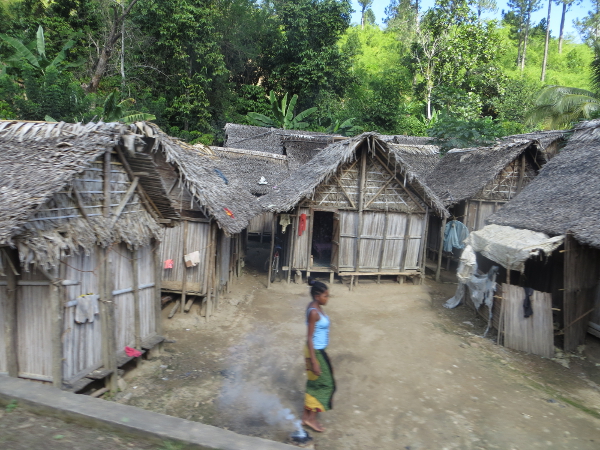
In einem anderen Ort waren wir bei einer Zusammenkunft mit zwischen 20 und 30 Vertretern einzelner Kommunen, für die ein Frühwarnsystem eingerichtet wurde. Das Treffen fand in einem Schulgebäude statt, in dem die Vertreter und wir im wahrsten Sinne des Wortes die Schulbank gedrückt haben, denn für erwachsene Menschen ist das schon eher eine Quetscherei. Wie auch immer: als der erste sprach (auf Madagassisch), dachte ich „Uh-oh, der liest uns die Leviten!“ – so hörte sich zumindest der Tonfall an. War aber dann gar nicht der Fall: er äußerte sich höchst zufrieden, war doch in der letzten Zyklonsaison zum ersten Mal niemand körperlich zu Schaden gekommen. Es wurde noch das eine oder andere hinzugefügt, dann meldete sich ein Herr und meinte, wir könnten hier noch den halben Tag sitzen, aber eigentlich sei alles gesagt. Offensichtlich kein Typ für Bullshit Bingo.
In another village we joined a meeting of about 20 to 30 community representatives where an early warning system for cyclones was put in place. The meeting took place in a school building where we were all sitting squashed into school benches… a little too small for grown-ups! Anyhow, when the first gentleman started to speak (in Malagasy) I thought: „Oh no, that’s bad news!“ – at least that’s what it sounded like. But it wasn’t the case at all: he was highly satisfied as it was the first cyclone season where no-one suffered bodily harm. A few other things were added and then another gentleman said that really, we might as well end it here because everything was said but of course if we wanted to go on and on until night fell… Not a bullshit-bingo type of guy, I guess.
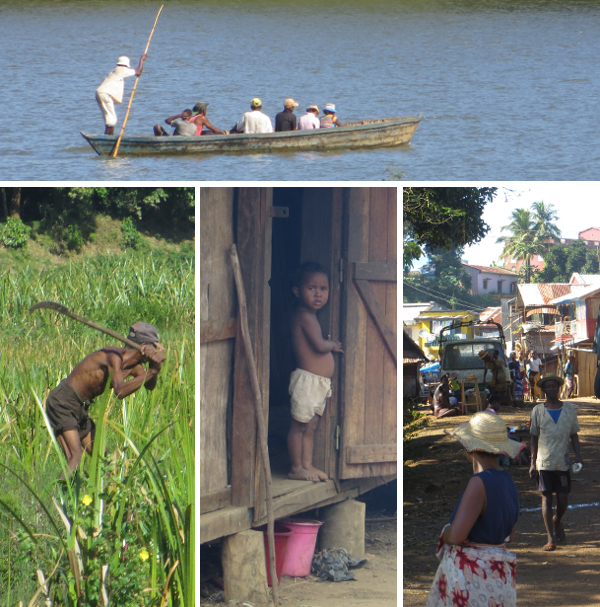
Und mit all dem gesagten habe ich noch kein Wort zu Farafangana verloren… Aber da waren es auch nur stundenlange Meetings in den eigenen Büroräumen und ein bisschen Nightlife: nach einem späten Abendessen im ganze 5 Zimmer umfassenden Hotel „Concombre masquée“ haben wir die neue Beach Bar des Ortes getestet (gemütlich – es wurde mir allerdings vom Sand sammeln an Ort und Stelle strikt abgeraten) und danach noch einen Blick in den „Club“ des Ortes geworfen… oioioi… einfach nicht meins und das fing schon bei der Musik an. Aber man muss ja alles mal erlebt haben. Auch das hier und jetzt anstehende Abendessen, deswegen: auf bald!
So much said already but not a word on Farafangana… but those were only hours and hours of meetings in our own offices and then a little nightlife: after a late dinner at our 5-room hotel „Concombre masquée“ we tested the new beach bar (very nice – but I was told not to collect any sand there) and then we had a brief look at the only dance club in town… oioioi… not my cup of tea at all and that started with the music. But I can say: been there, done that. Things are starting to get hectic in the kitchen so I guess I’d better sit down at the table, so: take care!
Barbara


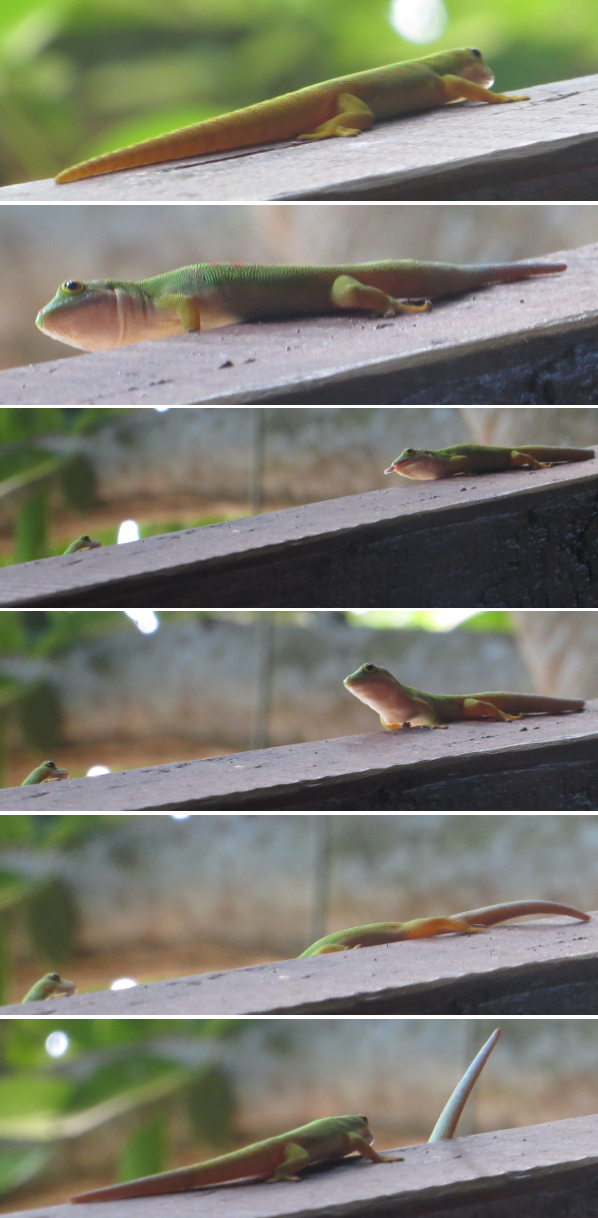

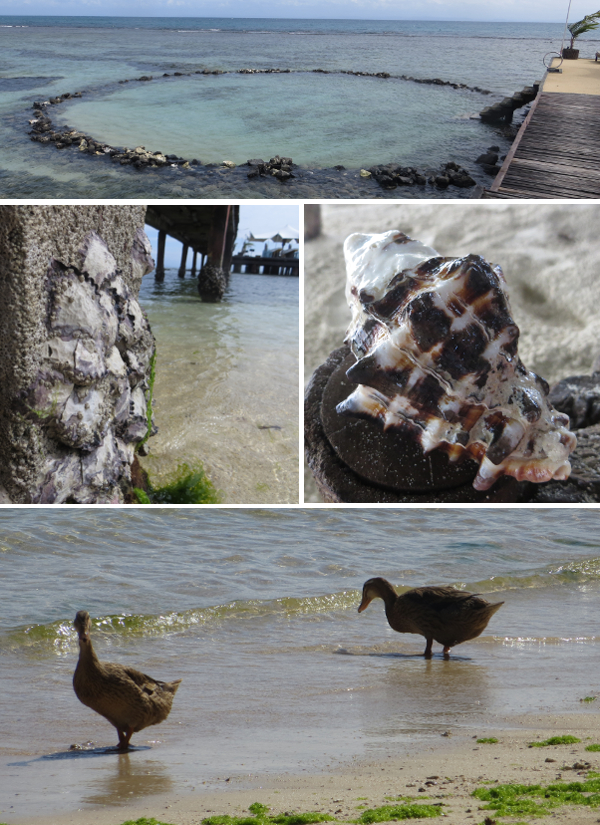

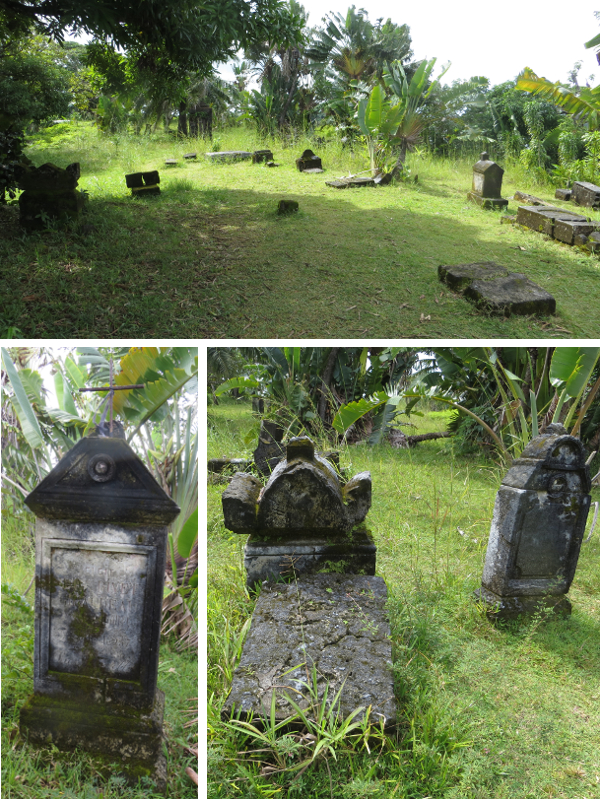


 Nun doch noch ein kurzer Blick zurück auf Farafanga und die Stätte der Nahrungszufuhr… Egal, wie ich es versucht habe, kein Foto kam ohne Reflektion zustande, aber ich denke, man kann die Herren, die hier gemeinsam für löslichen Kaffee werben, erkennen?
Nun doch noch ein kurzer Blick zurück auf Farafanga und die Stätte der Nahrungszufuhr… Egal, wie ich es versucht habe, kein Foto kam ohne Reflektion zustande, aber ich denke, man kann die Herren, die hier gemeinsam für löslichen Kaffee werben, erkennen?
